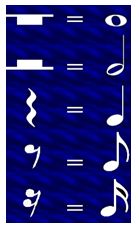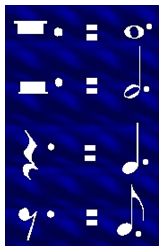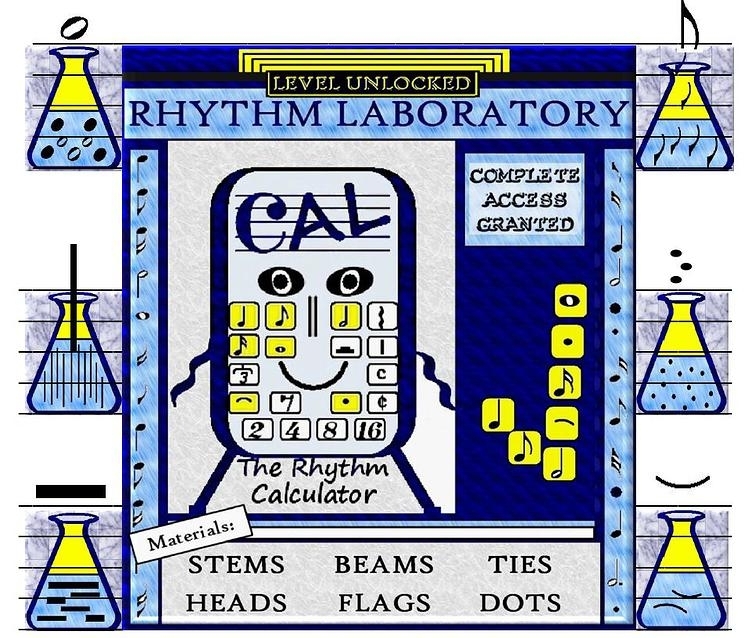Relating RESTS to NOTES



EVERY NOTE VALUE HAS AN EQUIVALENT REST!
Any increment of the beat can be notated as either rests or notes.
Each and every complete measure must always add up to the total number of beats defined by the time-signature. Measures are filled with a combination of sounds that you produce and the silences between them.
Rests can indicate silence for portions of Triplets too!

Later on, you will learn partial measures and additional advanced rhythmic devices. For now, the goal is to teach you rhythm basics and prepare to master the Rhythm Exam!
When practicing for the Rhythm Exam, the only competition that a student should experience is with their self. Rhythm skills must be learned by everyone in order to play as a unified ensemble.


Meet Cal Universal Language Rhythm Notation Music Staff Origins of the Staff
Rhythm Laboratory Notation Parts Note Heads Stems Beams Flags Note Construction
Common-Time Measures Bar-Lines Counting in Common-Time Whole, Half and Quarter Notes
Ties Dots Time-Signatures Q’s Rhythm Review Time-Signature Rules Beat Accent
Down-Beat and Up-Beat Conducting Patterns Cut-Time Common-Time Beat Emphasis
Three-Beat Measures Note Values Rhythm Workouts The ‘Cycle’ Note Equivalents
Counting Sub-Divisions “If You Can Say It, You Can Play It” Author’s Story Sub-Division Lingo
Quarter Notes with Eight Notes Adding Sixteenth Notes Notes Sharing Beams Beam Awareness Pointers
Triplets Triplet Workout Compound-Time Compound-Time Workout Music Rests
Rest and Note Equivalents Whole Rest Half Rest Quarter Rest Eighth Rest Sixteenth Rest
Dotted Rests Q’s Rest Review Process of Sub-Division Relating Rests to Notes Rhythm Exam Prep
Level 1 Rhythm Exam Level 2 Rhythm Exam Level 3 Rhythm Exam
Rhythm Laboratory Notation Parts Note Heads Stems Beams Flags Note Construction
Common-Time Measures Bar-Lines Counting in Common-Time Whole, Half and Quarter Notes
Ties Dots Time-Signatures Q’s Rhythm Review Time-Signature Rules Beat Accent
Down-Beat and Up-Beat Conducting Patterns Cut-Time Common-Time Beat Emphasis
Three-Beat Measures Note Values Rhythm Workouts The ‘Cycle’ Note Equivalents
Counting Sub-Divisions “If You Can Say It, You Can Play It” Author’s Story Sub-Division Lingo
Quarter Notes with Eight Notes Adding Sixteenth Notes Notes Sharing Beams Beam Awareness Pointers
Triplets Triplet Workout Compound-Time Compound-Time Workout Music Rests
Rest and Note Equivalents Whole Rest Half Rest Quarter Rest Eighth Rest Sixteenth Rest
Dotted Rests Q’s Rest Review Process of Sub-Division Relating Rests to Notes Rhythm Exam Prep
Level 1 Rhythm Exam Level 2 Rhythm Exam Level 3 Rhythm Exam




